Estimated reading time: 23 minutes.
December/2016 – The Canon EOS 5DS is the highest pixel count 135-format “full frame” DSLR on the market. Launched in February 2015, it has a 50.6MP effective CMOS sensor, that renders 8688×5792 files; 9% larger than Sony’s A7RII (42MP), and 19% larger than Nikon’s D810 (36MP). An alternative for landscape, portraiture and product photographers to reach the maximum resolution offer only by medium format backs, the 5DS is essentially a high-resolution EOS 5D Mark III, and they share the same platform and controls, that so many Canon shooters love. But the manufacturer didn’t let it stand still, and updated it to follow the higher resolution imager: two new DIGIC6 processors, to handle the extra pixel count; a motorized mirror mechanism, introduced on the 7D Mark II, for the first time on a full frame, to reduce camera vibration; and the 150K pixels RGB+IR metering, also from the 7DII, for better exposure calculations, also aiding the AF.
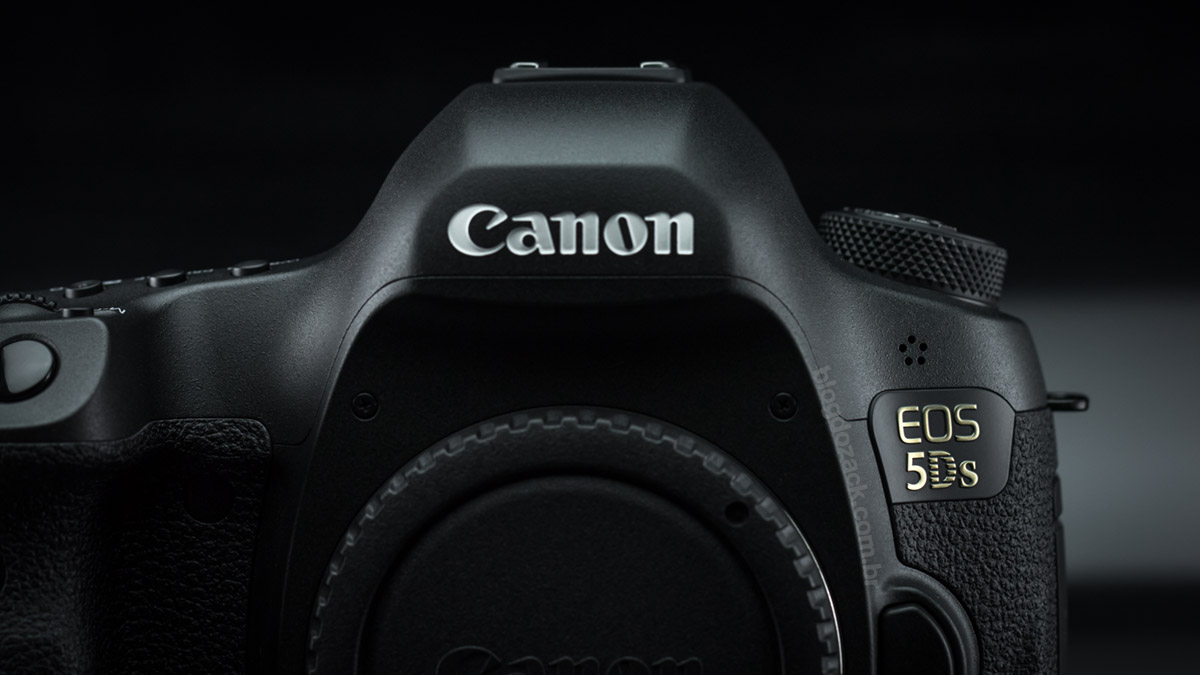
A camera bridging the 5D Mark III and the 5D Mark IV, the 5DS is a dedicated instrument for those printing in large format. With so many pixels, there’s little point in using it for web output or prints smaller than A1, so that’s the immediate purchasing decision: if you print your images, and very large, this is the best DSLR on the market. It got on blog do zack with a two years delay, exactly to say goodbye to the 5DIII, a camera I skipped in favor of the lighter and smaller EOS 6D, better for traveling. But now with a 5D Mark IV review around the corner, I decided to check what Canon did on the 5DIII era, and also put the 5DS sensor to the test. For US$3699 you get plenty of resolution for most prints, with the ease of use we’re used to on Canon’s 5D lineup. So, what did Canon changed from the 5D III? And what’s the 5DS 50MP sensor capable of? Let’s find out. Nice reading!

At 15.2 x 11.7 x 7.6cm of 845g of a magnesium structure (internal chassi and external plates), rubberized palm areas and high quality plastic buttons, the 5DS is virtually the same camera as the 5D Mark III, that for itself continued the 5D Mark II tough build legacy. A large camera to be used with top-of-the-line lenses, the 5DS praises its structural rigidity, with no shallow spaces or wobbling of internal parts. In your hands you can feel the colder touch of the metal front, top (including the viewfinder) and rear plates, to withstand even the most demanding jobs. All plastic doors are also well built, with rigid plastics and spring-loaded mechanisms, with visible protection against water and dust. Canon updated it just the tripod base, for extra stability, and the new metallic paint, that shines more than others; it feels glittery, for an unique look on the 5D lineup.
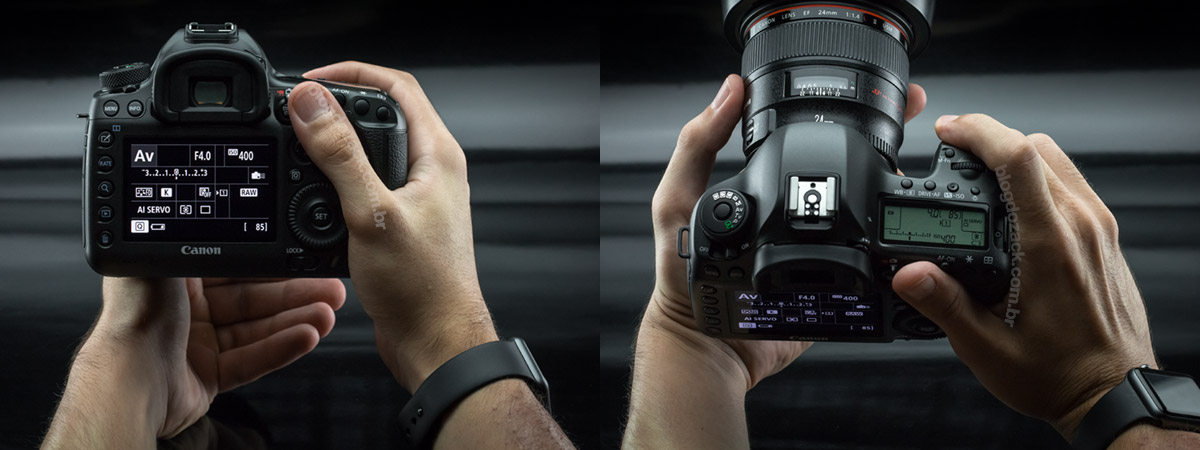
In your hands the ergonomics are obviously the same, that can both be a good and a bad thing. The good is the 5DS is an easy transition for those coming from the 5D Mark III, as there’s nothing new to learn. It’s the same button layout, finger grooves and adjustments we’re used to on large Canon cameras, to get it out of the box straight to work. It is made to balance with large L series lenses, and more comfortable than most mirrorless, that other brands insist on the non-sense “large lens, little camera” combo. But the bad part is the 5DS is essentially old compared to other Canon DSLRs, even the 7D Mark II that came before it (2014), and it doesn’t stand a chance against the recent 2016 5D Mark IV. The biggest absence is the lack of newer fast AF mode switches, that Canon added to the thumb area, marked in red: a spring-loaded lever around the 7DII rear joystick, and a diagonal button on the 5DIV, more intuitive to the user. So the 5DS is a missed opportunity for Canon, with no new ideas, just a recycling of the four year old 5D Mark III.
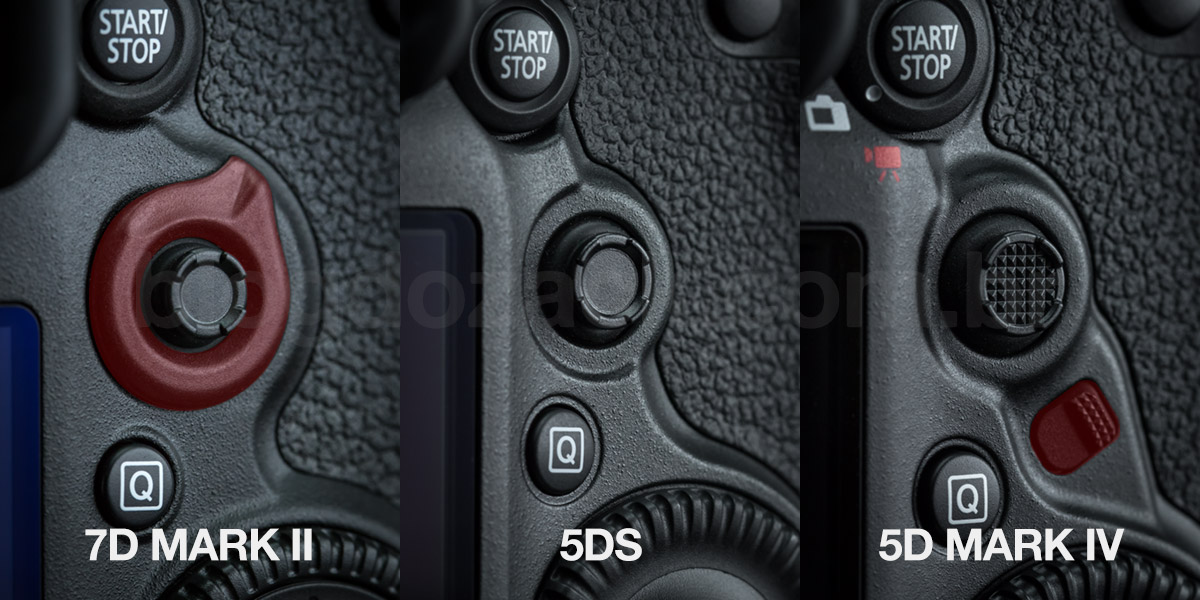
Being a large camera, Canon separate its controls on two distinct zones, one for exposure/shooting, usually used “blindingly” with the camera at eye level; and another for adjustments/playback, with the camera in hands. To your right-hand side, the logic behind a photo starts with the exposure programming, done by two vertical discs, one within index finger reach, at the front/top, and another through your thumb, at the back. They mix between aperture/shutter speed (M mode) or exposure compensation and exposure (Av and Tv), both easy to use. When it’s time to release the shutter, the index finger trigger features two stages, one customizable to AE+AF or just AE, and the second to take the photo. A highlight of the second stage is how much deeper it is in travel, made to avoid camera shake. It’s the same rubberized feedback from the 6D, but much deeper than all 5DIII/5DIV/7DII; that even takes time to get used to. I did both 5DS and 5DIV reviews at the same time and felt the deeper shutter press; if you don’t fully press it, it won’t shoot.
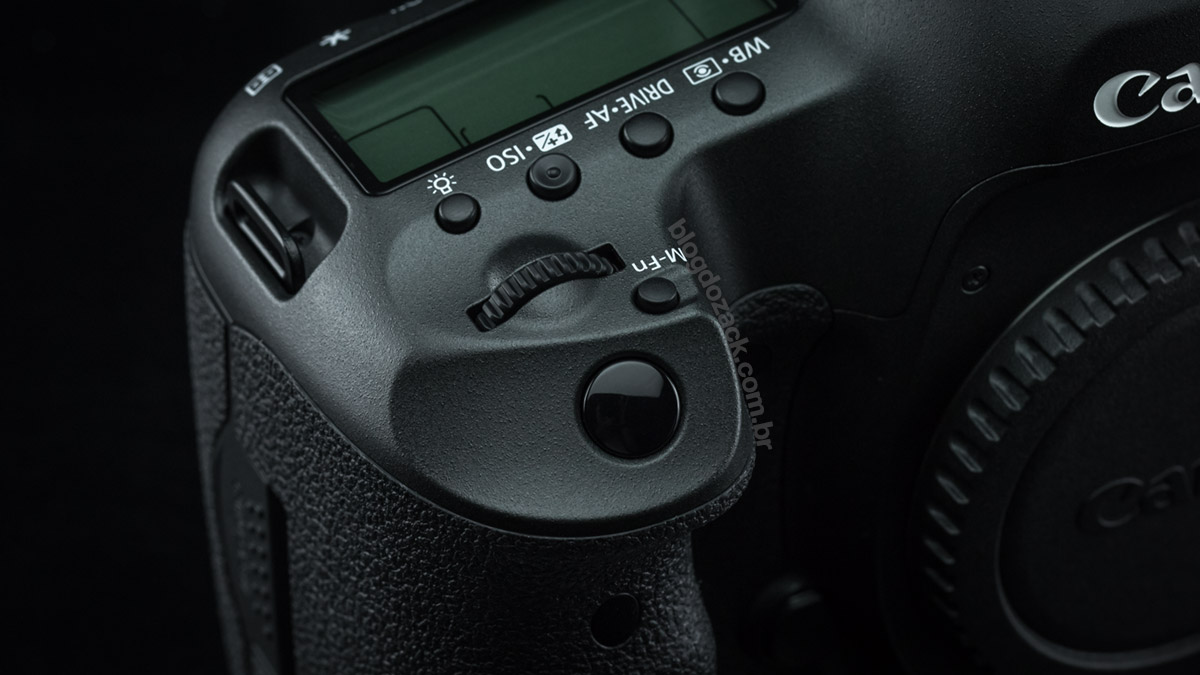
Next to the shutter release, a tiny M-Fn button is the only click-type on the whole camera, and comes pre-adjusted to cycle between the auto-focus selection modes. It works together with the shoulder buttons at the rear of the camera, within thumbs reach, to intuitively control the lens (AF-ON), the metering (AE-L) and the AF module (with the frontal M-Fn). They’re intuitive to use at the decisive moment prior to the shot, and oppose the rear thumb joystick. This joystick is used to change the focusing points (eight directions + center), or to navigate the camera’s menus, and it’s a plastic piece, with side clicks just like the older 5D Mark II. There’s a groove for your thumb’s palm, and raised plastic side flips to give traction. With the camera at eye level, you “go” through your thumb selecting the focusing point in the viewfinder, never missing the subject. It’s basicaly the same way of shooting on all professional EOS, fast and easy to use.

Opposite to these shoulder buttons, still on the right camera side, we start with the off-eye’s controls, used when your holding the camera far from your face. The first is the Live View lever, with a middle START/STOP button. On photo mode, it raises the DSLR mirror to show the image sensor an exact preview of what’s going on in front of the camera, rendered on the rear LCD, just like a smartphone. It’s useful to photograph products, landscapes and architecture, given the precise framing. And on Movie mode this button, er, start and stops the capture. Next to the LCD screen, a tiny Q button triggers the customizable quick menu, with exposure, metering, recording formats etc setting, and it’s almost redundant if we consider the top circle buttons, near the index finger, and the second LCD. They’re WB/metering, DRIVE/AF, flash compensation/ISO (with a distinct dot tactile feedback), all adjustments displayed on the top LCD. So you get two ways to adjust the camera: via the top LCD, with the camera at waist level; or through the rear LCD.
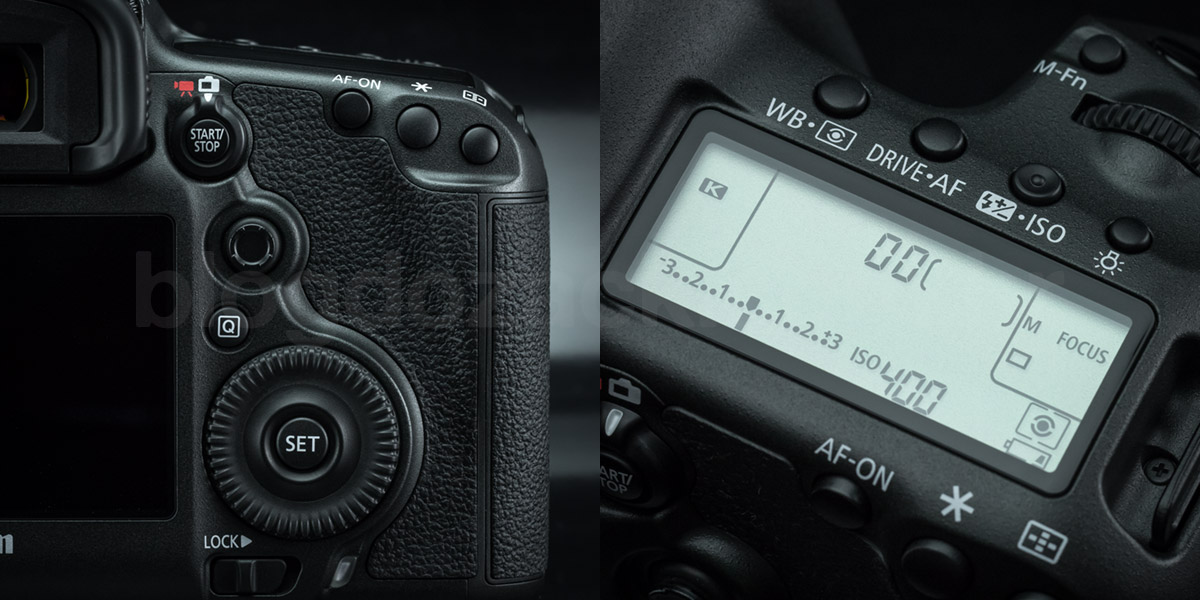
Back at the rear, Canon’s large vertical dial is also within thumb’s reach, used during playback, as back/forth; or for silent adjustments during video recording. There’s nothing indicated on the hardware (painted or engraved), but this rear dial is actually a touch pad, activated by the “Silent Control” option on the camera’s menu. It’s touch sensitive at four directions, to quietly adjust settings when the recording is running. At its center sits Canon’s SET button, serving as an “OK” for most menus. During exposure, however, it can be programmed for various functions, arguably the most interesting being an exposure compensation (+/-) one, during manual exposure. When using the camera is Auto-ISO, you can 1) manually decide the shutter speed and aperture through the dials, 2) let the camera decide the lowest ISO possible, for less noise and; 3) activate an exposure compensation, otherwise made through the menus, as both dials would be in use. It’s a great SET function, as Canon refuses do add a +/- button to it’s larger EOSs.

To the left is the secondary control zone, also made for out-of-eye-level operations. At the top, Canon adds a large mode selection dial, simplified for professional usage. There’s just A+, P, Tv, Av, M, B and C1/C2/C3 positions, leaving amateur “scene” or “flash-off” options out. This dial is fat and rubberized, featuring a central lock button, that must be pressed to release the dial. It’s firm, impossible to be switched by accident, and different only from the 1D series that get rid of it all together, opting for a MODE button on the other side. Next to the LCD screen, a column of five buttons give access to playback, zoom, delete, side-by-side playback/Picture Style and RATE, that gives stars to sort your photos. And at the top, self-explanatory MENU and INFO buttons cycle through the camera’s menus, displayed on the rear LCD. Again, it’s all obvious and easy to use.

On the 5DS left panel, to the photographer, are its data ports, that reveal the first ideology difference between this camera and the 5D Mark III. While the microphone IN, PC flash sync OUT, remote control and HDMI are identical, the 5DS gets a taller USB3.0 plug, instead of USB2.0 + headphones OUT on the Mark III; also losing the “clean” HDMI output. Canon makes it clear which camera serve’s what: a hybrid full frame for videos (Mark III/IV), and a high resolution full frame (5DS). Partially thanks to DIGIC 6’s support for the faster USB3.0, Canon curiously didn’t speed up the memory card BUS, that sit on the other side. Just like the Mark III, the 5DS accepts only type I Compact Flash, compatible with UDMA 7 (167MB/s max.), and the UHS-I SD (104MB/s max.); lagging behind the CFast 2.0 (up to 600MB/s) of the 1D-X Mark II, also DIGIC 6+, or newer mirrorless UHS-II SDs (up to 312MB/s). So in spite of the much higher data volume, Canon refused to enhance the 5DS memory BUS, that stands still in time with the EOS 5D Mark III.
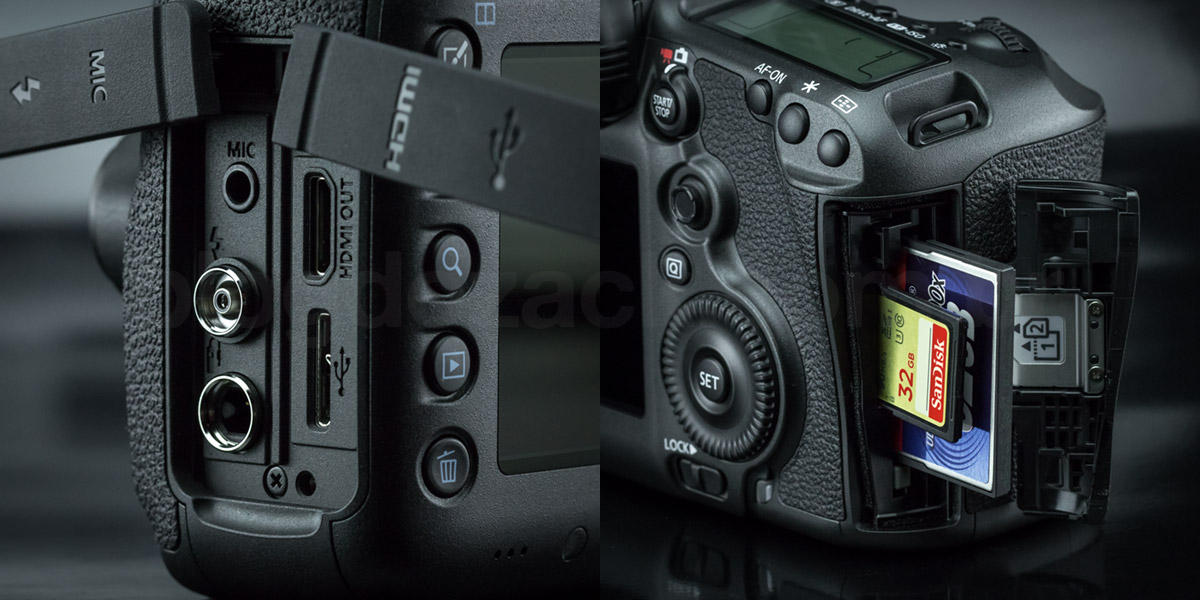
Finally at the bottom, the EOS 5DS accepts the same LP-E6N from before, rated at “just” 700 pictures; less than the 5D Mark III 900. Remember its just an estimated rating, that vary depending on the LCD usage. One time I got less than 400 clicks using Live View, and another I got 800, not using the rear LCD that much. It’s much more than any mirrorless or medium format camera, that gives you the chance for even more pictures. Anyway, the 5DS do seems like a power hungry camera, so I wouldn’t leave for the weekend without the battery charger. At the front the EF mount is tough and sturdy, with a giant lens release button, very comfortable to use. And at the top, the 5DS accepts all Canon’s EX speedlites, that sits on a metal hot-shoe.

The Canon EOS 5DS gives us that premium quality we can expect from an over US$3000 camera, made to last for a lifetime. The shutter module, for example, is rated at at least 150.000 cycles before failure, way ahead any medium format. It’s a camera built like a tank, to withstand war photography (Canon’s words…), everyday studio work or heavy trails, not getting in the photographer’s way. On the EOS lineup, the full frame gets better only on the perfectly built 1D-X, that cost double but delivers half the resolution. Or the newer 5D Mark IV, that brings the 5D family to the Dual Pixel party, although resting on a max. 30MP resolution. But as we’ll see, the 5DS is still a perfect contender on the 5D lineup, besides sharing the 4 years old Mark III platform.
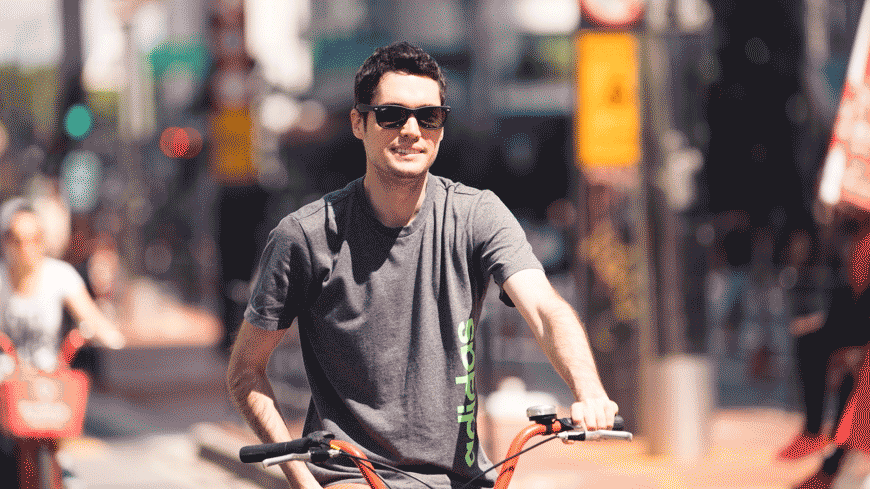
“Ray-Ban” with the EOS 5DS + Sigma 150-600mm f/5-6.3 DG OS HSM Contemporary at f/6.3 1/1000 ISO400 @ 347mm.

100% crop, detail (first frame) of a 5fps sequence, at 50.6MP.
Besides sharing the 5D Mark III platform, practically everything changed inside the 5DS. Let’s start with the pair of DIGIC 6 processors (it was only one DIGIC 5 on the Mark III), the 5DS is a fast camera, no matter the 50.6MP resolution and 20MB JPEGs, or 50-80MB raws. With a booting time of just 0.05 seconds, 59ms shutter lag and up to five frames per second capturing speed, it feels faster than the 5D Mark III, to turn on or to process files in-camera. The main highlight is that, for the first time ever, the 50MP are available to shoot action, from sports to dynamic portraits, as no medium format camera goes faster than 3fps, or even touches Canon’s AF performance. Although in continuous drive the 5DS can’t handle long sequences, with an internal raw buffer for “just” 14 files (it’s 510 (!) JPEGs, though), with UDMA 7 CF cars, it is still very fast. It’s a revolutionary product for resolution and speed, as it open new possibilities for photographers that requires both.
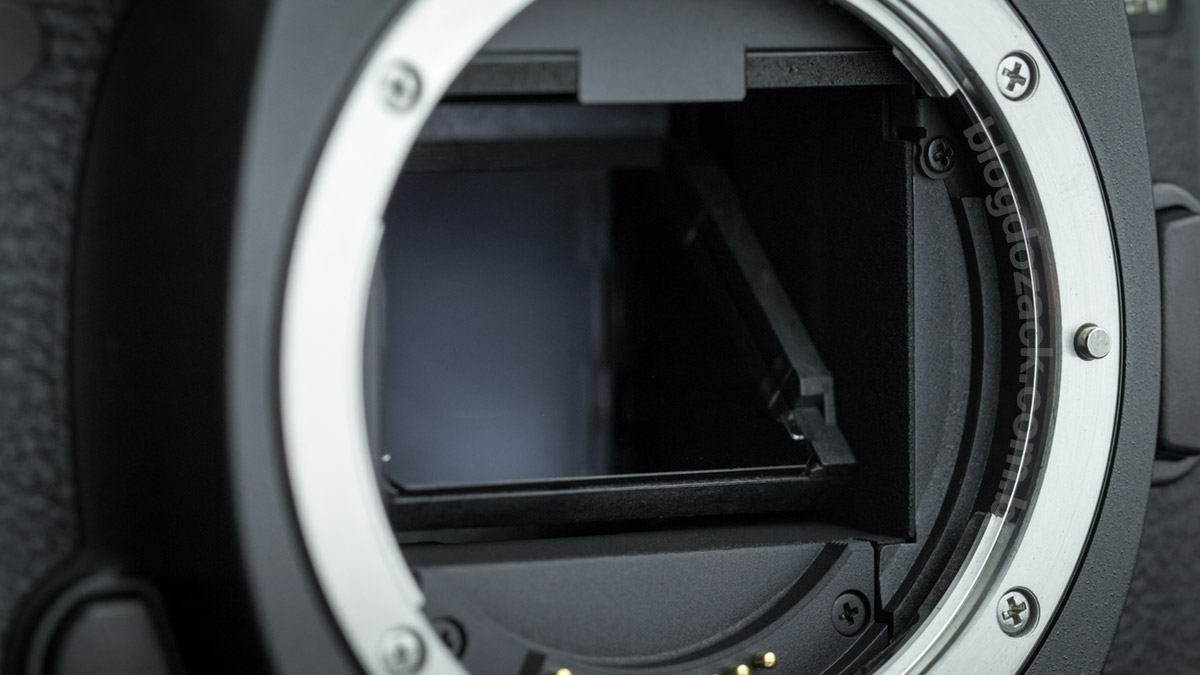
One thing we learned with APS-C cameras and the Nikon D800, is that “high density” cameras (with a large number of pixels per square-inch of the sensor) require new standards for exposure, to avoid blurred photos. Any slight breath at the wrong time and the capture lacks sharpness, once so many pixels also enlarge any movement. So much speed and resolution ask for new technologies, to 1) avoid camera vibrations and 2) allow sharp exposures, given the pixel size. And Canon tackled the problem revamping the mirror + shutter modules, to be as smooth as possible.

Borrowed from the EOS 7D Mark II, the 5DS mirror system is motorized, for the first time on a Canon full frame. They adjust the speed of every part of the exposure cycle, reducing impact on moving pieces, different from older spring-dependent DLSR. On the film era it wasn’t much of a problem, as we never really enjoyed every capture on a sharp, pixel based computer screen. But on digital cameras it did create a problem, visible the higher the resolution. The 5DS solves it in an elegant fashion, as the whole module is also quieter. So it’s possible to capture exposures at 1/4 the recommended shutter speed, with stabilized lenses, without the need of a tripod.
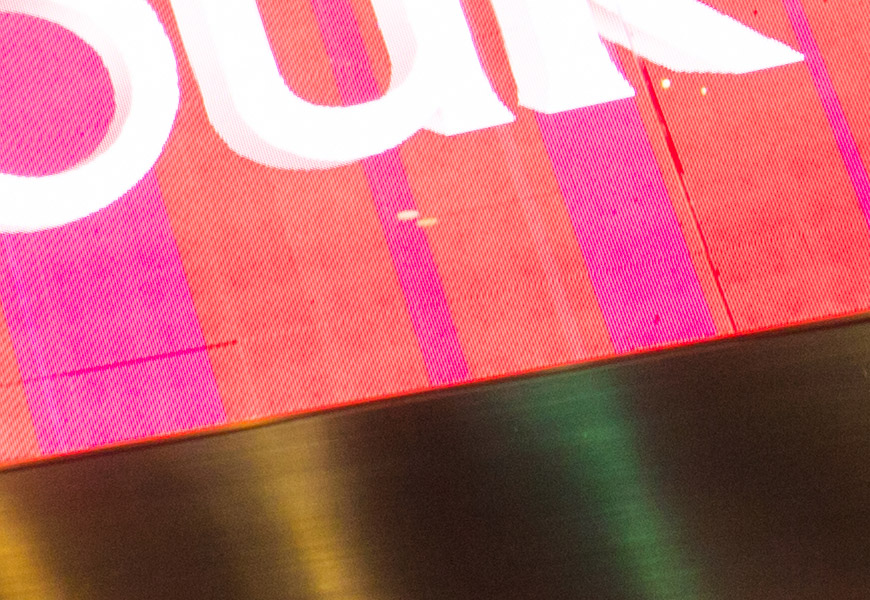
100% crop, slower exposures, without tripod and pixel-perfectly sharp, in spite of the 50.6MP; every LED on the street sign is rendered.
An exclusive 5DS function is it’s ability to delay the mirror up > exposure > mirror down cycle, to enhance the high resolution capture ever further. While any SLR can easily keep the mirror up to avoid vibrations (mirror lock-up), Canon went a step ahead and associated it with a timer, as fast as 1/8 of a second, to automatize the process. It’s much more useful than the blackout viewfinder on the mirror lock-up alone, as it happens for a brief time. Together with the camera’s “Silent” DRIVE mode, and available during Live View, it purposefully delay the capture until all vibrations are gone. It’s perfect for sharp macrophotography with telephoto lenses, every time.
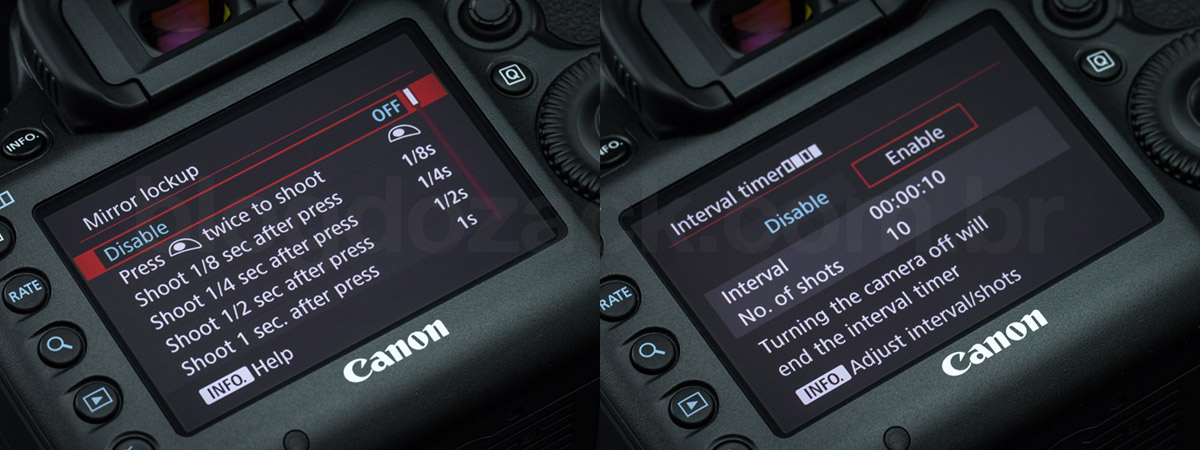
And for the first time on the 5D lineup, an interval timer comes standard on the 5DS menu. It’s possible to create time-lapses in camera, to reduce a long period of time to just a few frames, without the need of an external releaser or even the photographers presence. It’s made directly in the main menu, opposite to some camera’s that associate it with a drive mode; allowing for even “Silent” mode to be used. The high resolution files are recorded to the memory card, over the 8K standard, to be used on a computer. Or they can be combined in camera for 1080P30 time-lapses.
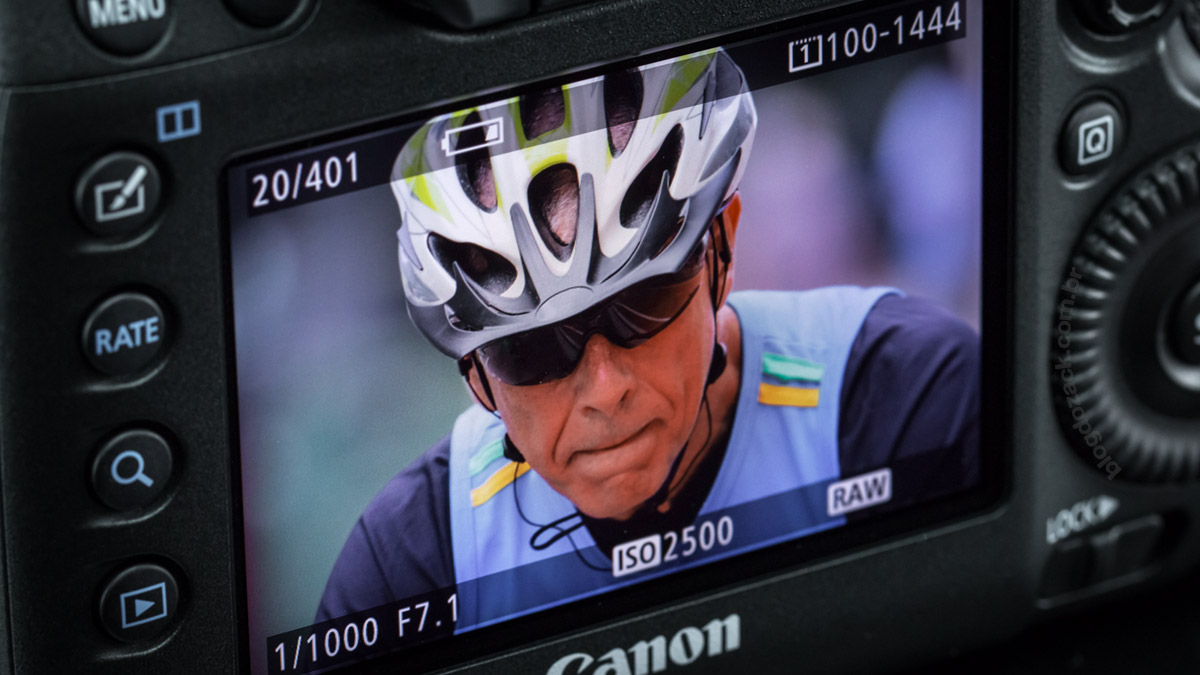
As we expect from a US$3000 full frame DSLR, the experience with the 5DS LCD and viewfinder is awesome. The rear main LCD is a Clear View II panel, with 1.04M dots at 3.2”, the same as the EOS 5D Mark III. The TFT screen sits closer to the outer plastic, that itself is treated against reflections, also enhancing contrast. And the viewfinder is an “Intelligent II” type (was I on the Mark III), displaying new AF, white balance and electronic level data, on a LCD overlay on top of the 100% coverage pentaprism. This crystal gives a 0.71x magnification to the image, for an immersive view. They’re both great on an everyday usage: the large viewfinder in bright and lifelike, thanks to the optical piece, impossible on most mirrorless; and the LCD is sharp, calibrated for Canon’s colors.
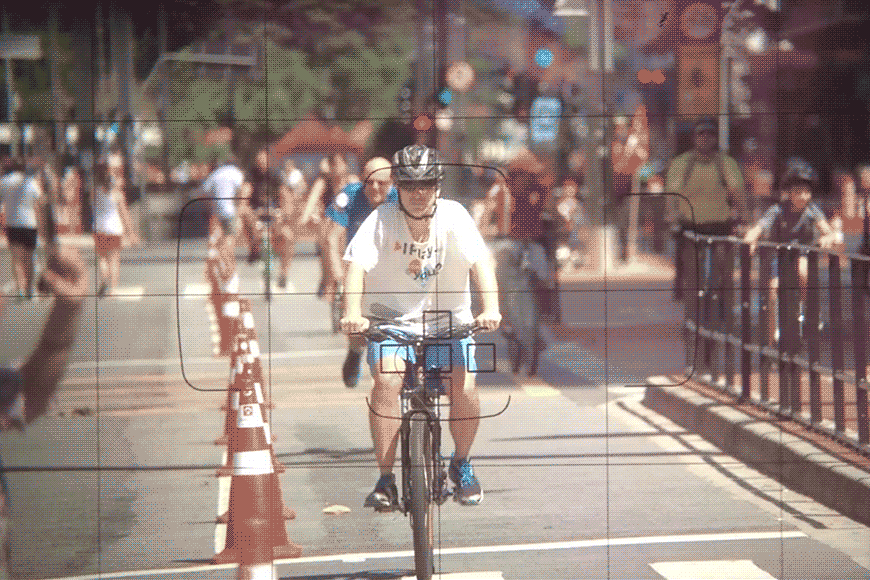
Serving as a 5D Mark III review, the EOS 5DS uses the same 61-point high density auto-focusing module, presented in 2012. Borrowed from the top-of-the-line 1D-X, the headline was the excessive AF point count, flexible to follow subjects or to give variety to your compositions, paving the way for new types of photography. The AI SERVO III menus are the same as the III, with adjustments for sensitivity, speed and predictive algorithm, including 6 pre-programmed cases to speed up operation. On the other hand, the same 41 cross-type points, 5 high precision dual cross-type, 60% horizontal coverage and up to -2EV sensitivity got a new ally on the 5DS: a 150.000 RGB + IR metering from the EOS 7D Mark II, way more advanced than the “63 zone” system from the 5D III.

A 150.000 dots metering sensor is practically a videocamera inside the DSLR. Mounted on top of the viewfinder, it can “see” with plenty of details what’s in front of the camera, giving extra data for the metering processor, that’s more precise. Not only it can “see” as it can poetically “feel”: it’s also infra-red sensitive, capable of distinguishing between normal colors and skin tones, enabling the 5DS to a mode lacking on the 5D Mark III: the EOS iTR (intellingent tracking) AF. With this mode, the 5DS practically can’t miss a human subject, perfect to auto-selecting focusing points. So besides the depth from the AF module, the camera can also see people, keeping track of their position.
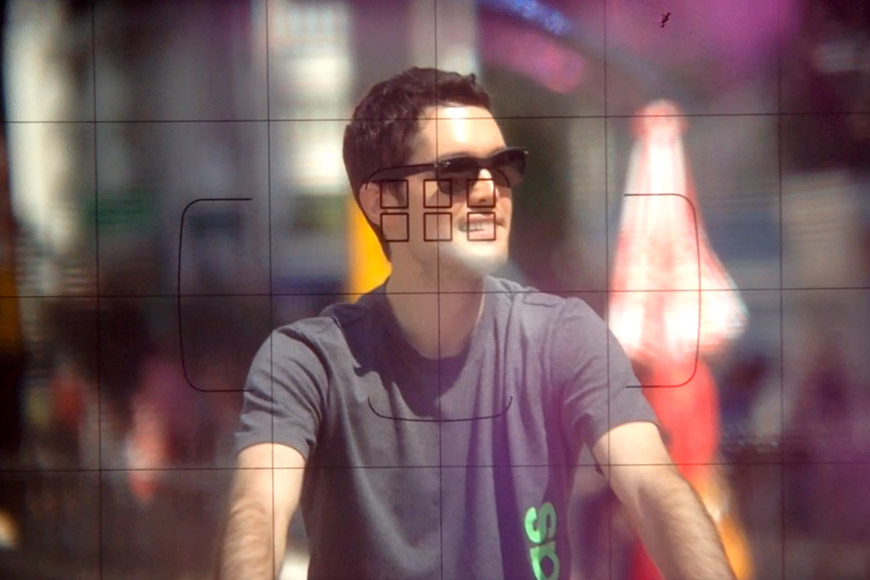
On the other hand, the EOS iTR still doesn’t work like Nikon’s 3D Tracking, made to substitute the “focusing and recompose” technique, great for product photography. While Canon gives priority to the subject distance, coming from the phase module, and then associates it with color, Nikon’s 3D tracking is the opposite, giving color priority before distance; even not being recommended to shoot action. So it’s the same question I made on the 7D Mark II: no matter the high resolution metering, Canon still can’t follow colors only on the X and Y axis, through the viewfinder. They recommend using Live View for that, that feeds the dual-DIGIC 6 a 50.6MP image to analyse.
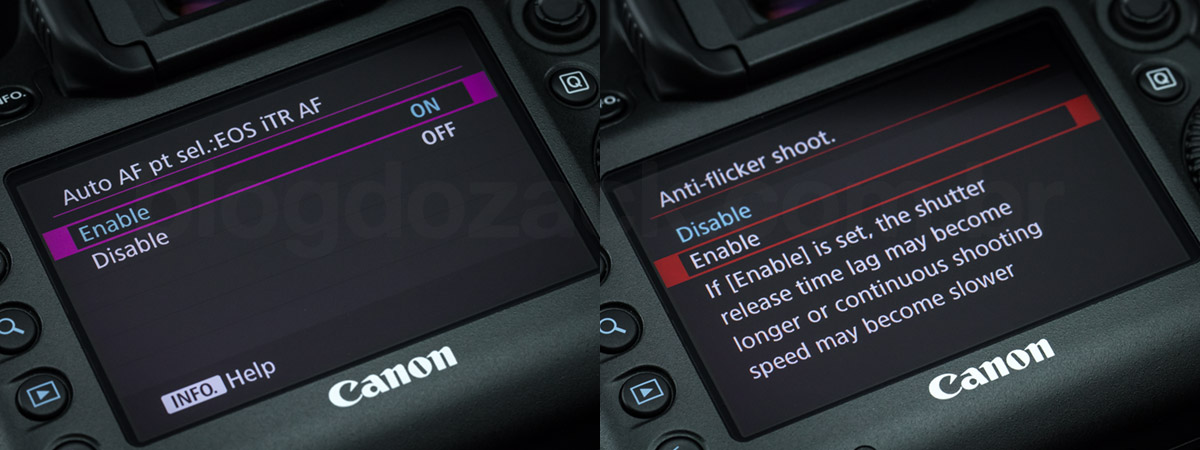
Also the updated metering adds another function over the 5D Mark III: the automatic flicker control, guaranteeing uniform exposures even under electronic lights. Flicker happens when the electrical grid frequency differs from the camera’s reading speed, giving darker bands on the frame. It’s common on stadiums, gymnasiums and event venues, potentially destroying captures. The 5DS metering module can “see” and calculate the flicker frequency, delaying the camera capture to keep both in sync. It results in perfectly exposed files, and a welcomed addition to the 5D lineup.
Besides obviously meant for photography, as Canon deliberately removed the clean HDMI output and the headphone jack; as a matter of a fact, the 5DS video deserves some mentioning, especially from a website that historically refuses to recommend EOS’s DSLRs. Magically the 5DS repeats the 5D Mark III video quality: a fairly detailed 1080P30 capture, ahead of most EOS, free of aliasing and moiré, that plague most Canons. “Magically” because the leap in resolution on the 5DS requires Canon to do the damn line skipping; a technique prone to generate video artifacts. While the 5D Mark III sensor purposefully had 22MP to pixel bine a 1080P feed, the 50.6MP 5DS can’t do that. But it delivers a great 1080P30 video, and it’s possible to recommend it for Full HD capture.
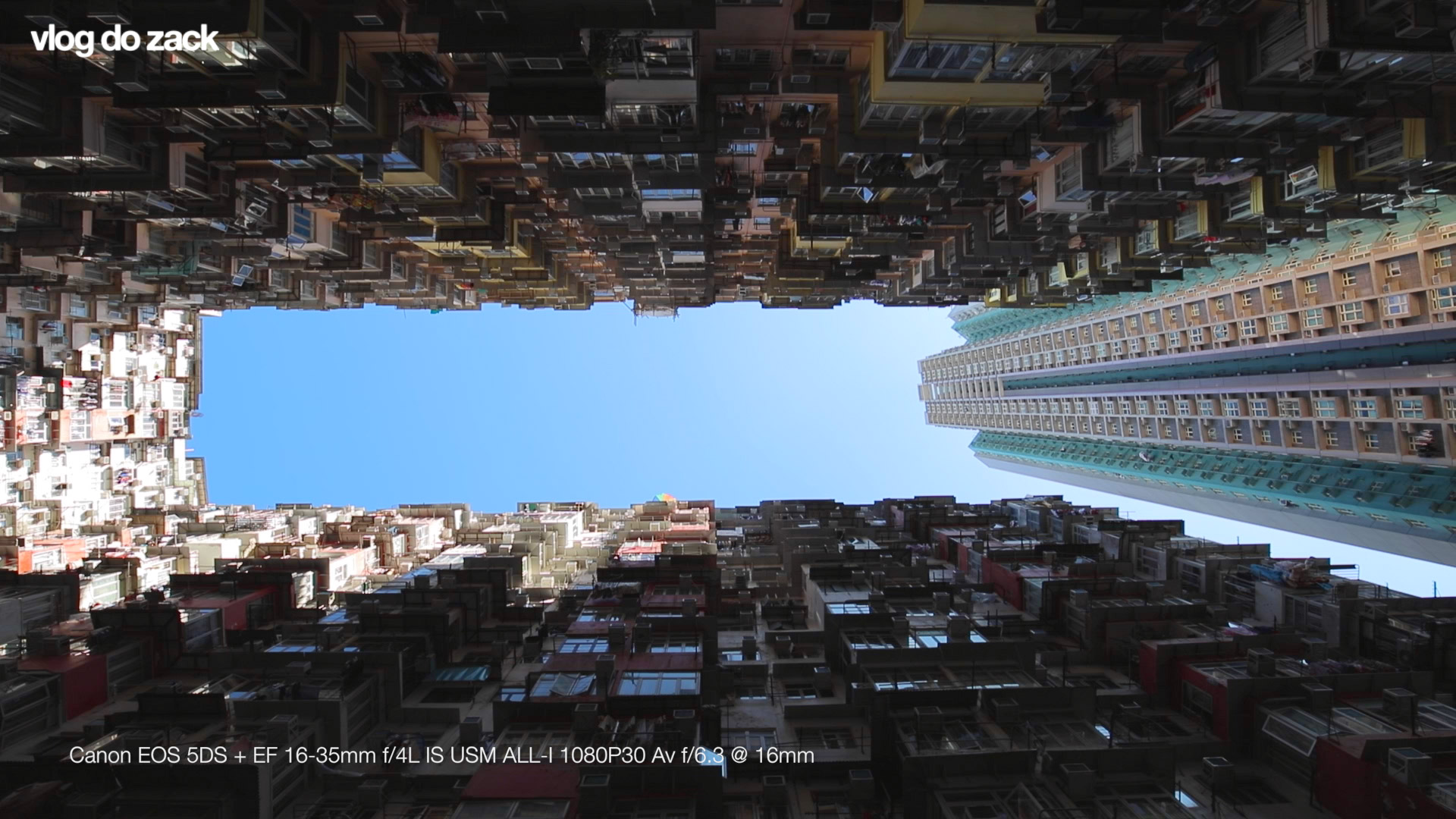
“Yick Fat” with the EOS 5DS + EF 16-35mm f/4L IS USM em ALL-I 1080P30 Av f/6.3 @ 16mm. (click for larger)
No, we still don’t get zebras, peaking or any other assistance during video recording; the Mark III didn’t have it neither. Nor we get the Nikon D750 swivel LCD screen. But an interesting addition, however, it the EOS 5DS attempt to auto focus (SERVO) during video recording. Canon bets on the dual DIGIC6 performance to contrast-detect focus on the EOS Movie mode, as the 5DS lacks any fancy Dual Pixel or Hybrid CMOS tech. But honestly? It works! While the 5DS won’t track soccer players in the field, it is more than capable of adjusting subtle changes during, for example, interviews, even keeping a human subject on track. It’s curious that Canon removed an important feature (the clean HDMI), but added a great one. It’s the EOS Movie way of being.

It’s impossible not to notice the lack of newer features found on even older EOS cameras, no matter the 2015 launch. Compared to the 2014 7D Mark II, the 5DS lacks the built-in GPS (launched on the 6D), very useful for landscape photographers; the 65-point, wide coverage AF module; and the faster thumb lever, for changing the AF modes. Over the 2012 EOS 6D, the 5DS lacks the built-in Wi-Fi, great for wirelessly triggering the camera or previewing the Live View from a distance, great around the studio; or even the -3EV AF center point. And compared to the new 2016 5D Mark IV, the ergonomics and main features (touch interface, Dual Pixel sensor, 4K video, 100% wireless) lets the 5DS very dated, even making their existence on the same kit a tough job. I tested both cameras at the same time, and couldn’t help but noticing how hard it is to go back to a button based interface (trust me, the 5DIV touch interface in fantastic); or even the camera’s design. So Canon missed a great opportunity on the 5DS, no matter how great it is. Rumors suggest a sooner than expected 5DS Mark II, with the Mark IV body plus a newer sensor. But these are just rumors…
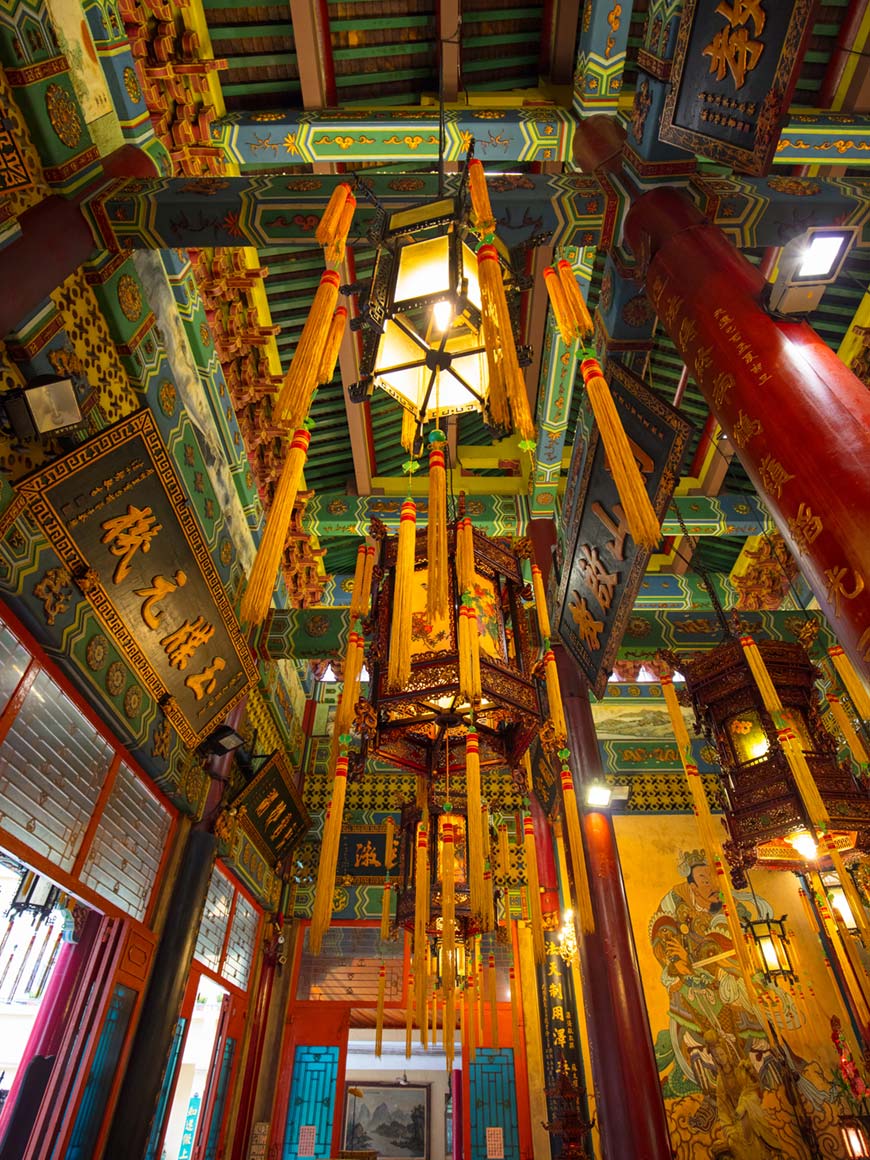
“Ching Chung Koon” with the EF 16-35mm f/4L IS USM at f/4 1/15 ISO640 @ 16mm; some raw files available at Patreon.
Before talking about the 5DS image quality, it’s worth mentioning it’s not alone on the high-res 5D family. A second camera, 5DSR, is the same as 5DS, but comes with a self-canceling low-pass filter, to enhance its micro contrast. A similar strategy was used by Nikon on the D800/D800E cameras, both identical, but the “E” version also had a self-cancelling low-pass filter; completely removed on the D810. One thing to notice, however, is that “self-cancelling” (D800E/5DSR) and “completely removed” (D810) are different ideas. And as one expects, to remove the filter enhances sharpness even further. As I didn’t feel the 5DSR much shaper than the 5DS, I opted for the 5DS.
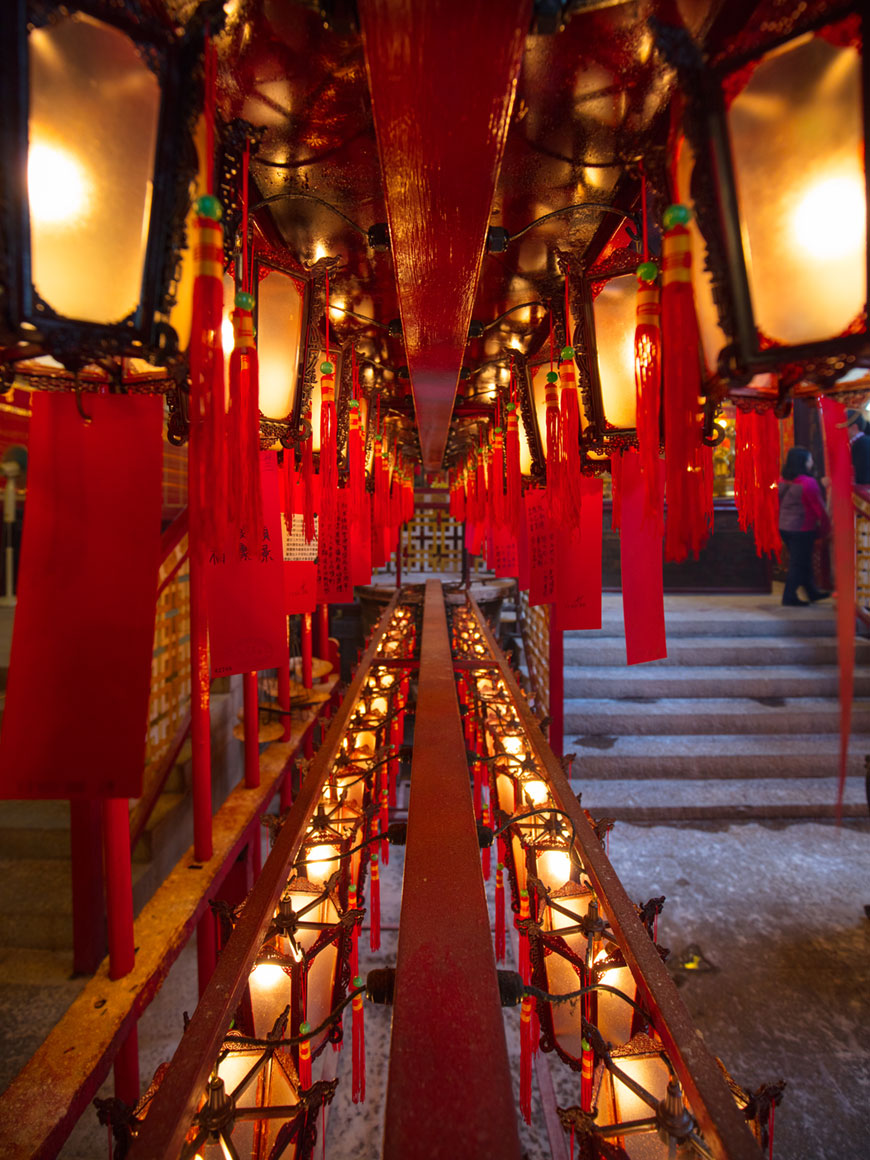
“Lanterns” with the EF 16-35mm f/4L IS USM at f/4 1/15 ISO200 @ 16mm.
With a 135 format (“full frame”) 50.6MP CMOS sensor, that generates 8688×5792 files recorded at 14-bit on Canon’s compressed CR2 50-80MB raws, the 5DS/5DSR are the 3:2 DSLRs with the highest resolution on the market. Ahead of even medium format DSLRs, like Pentax’s 645Z or Phase One’s IQ250, that use Sony’s imagers at 4:3 ratio and smaller X axis files (8256×6192), the 5DS/R are a big advancement for the 135 full frame format. A chip from the same generation as the 7D Mark II, Canon declares both share the same tech, gapless with 16 dual channel readouts, presented on the 1D-X (2011); but one used for speed and Dual Pixel (7DII), and the other for resolution (5DS). So the image quality results are practically the same: Bayer’s standard sharpness; Canon’s EOS recent dynamic range, with no banding on recovered shadows; and clean files up to ISO800, with loss of details over 3200. The colors that make Canon famous are intact, but for the first time at 50MP.
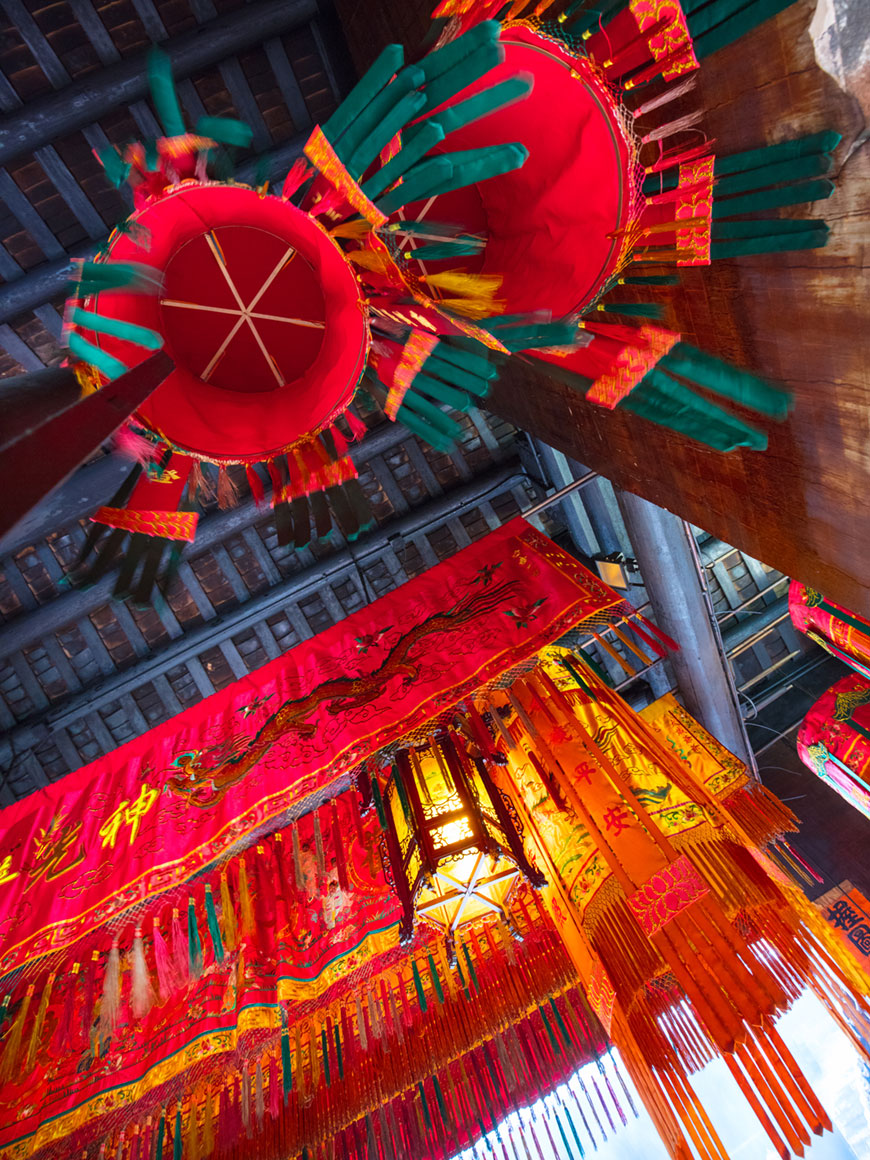
“From the top” with the EF 16-35mm f/4L IS USM at f/4 1/5 ISO1250 @ 16mm.
I don’t even have to mention the 5DS impressive detail capabilities, ahead of any full frame camera on the market. On urban scenes, it’s not every brick on a building’s facade; it’s the difference in tone on the cement surrounding them. On landscapes, it’s not the fine lines of rocks; it’s wild animals on supposedly empty areas. On product photography, it’s unprecedented details on metal, rubber and plastic textures. While lower 100-400 ISOs are recommend for maximum resolution, with noiseless details, it’s interesting to see how this imager keeps the files clean up to ISO3200, as long as the subject is well lit. On sporting events, when we use higher ISOs to compensate for faster shutter speeds, the 5DS registers skin textures like we’d never seen on action shots.

100% crop, every brick on a building facade.

“Mountain Goat” with the Sigma 150-600mm f/5-6.3 DG OS HSM Contemporary at f/7.1 1/125 ISO1250 @ 150mm.

100% crop, yes, there’s a lonely goat out there.

100% crop, previously invisible details on product shots.

100% crop, even at ISO2500, the 5DS details are awesome, as long as they’re lit.
”Montana” with the Sigma 150-600mm f/5-6.3 DG OS HSM C at f/7.1 1/125 ISO400 @ 150mm; Exp. +0.30, HLi. -60, Shad. +100, Blacks +100.The dynamic range is also good, on the same level as the 7D Mark II. There’s no banding on fair adjustments like +1 or +2EV on Adobe’s Camera Raw, and color noise only show over +3EV, exclusively around the shadows. The highlights are well preserved up to -2EV, giving blowout skies it’s details back, that also recover some tones. No, it’s not as flexible as Sony’s EXMOR sensors, that tolerate over +5EV compensations with no visible loss of quality, used on Alpha’s and Nikon’s D8## cameras. But none of them reach the 50.6MP pixel count, and that’s your decision: you either need raw pixel data for large printing, with fair dynamic range for everyday exposures; or make do with the 42MP files from a A7RII/a99II, with extra flexibility in post but visibly less resolution.
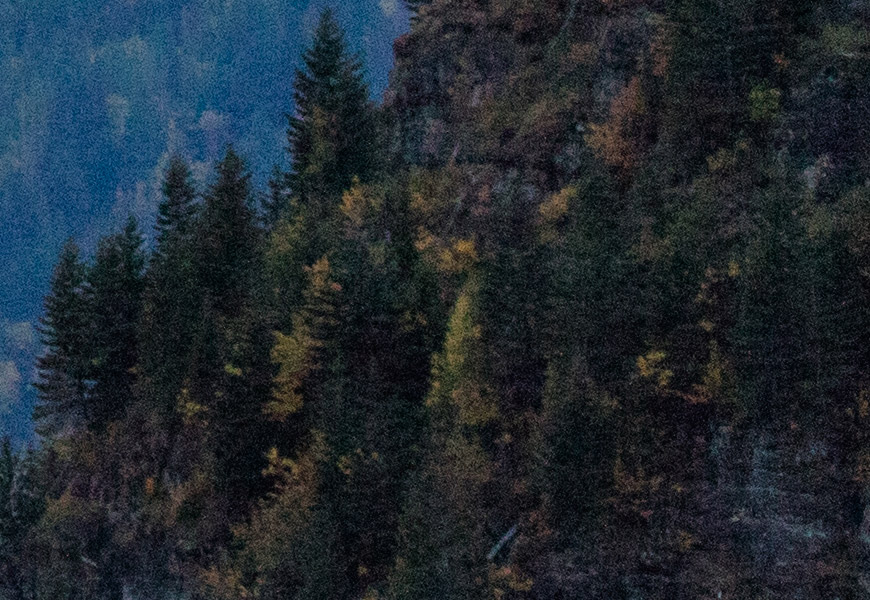
100% crop, visible noise from an extreme software compensation.
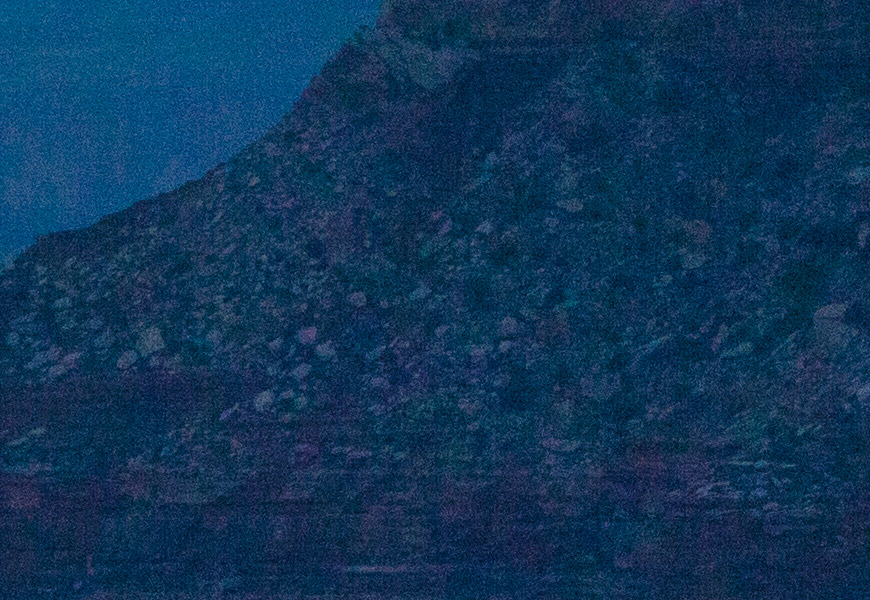
100% crop, recovered shadow details on a seemingly black exposure.
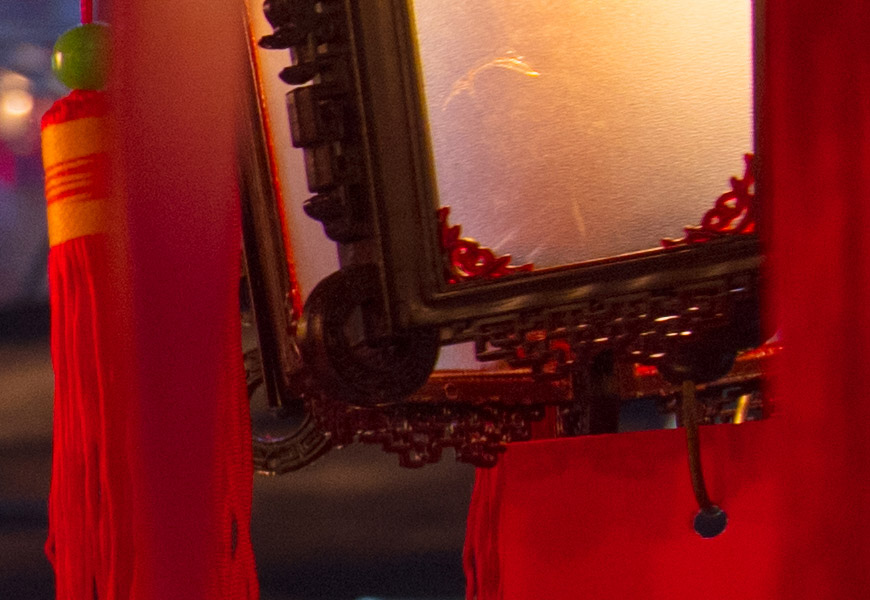
100% crop, practically no noise between ISO100 and 400 exposures.

100% crop, no banding on the 5DS software recovery, like the 1D-X and 7D Mark II.
High ISO noise is visible, again, on the same level of the 7D Mark II. But here lies the 5DS main image quality paradox: it’s full frame, although it doesn’t behave like one. As the pixels are very small, and Canon didn’t really improve the 7D Mark II sensor tech, the 5DS is fairly limited under low light. But for maximum resolution and extreme details, on no camera you’re supposed to raise the ISO above 800; going against the 5DS main idea. So on these ISOs, a thread of fine grains take over the 5DS files, mostly visible on the computer screen, at the pixel level (100%). But on the other hand, it’s interesting to see how little impact the details suffer, allowing for high ISO works. For example inside a Man-Mon temple in Hong Kong, without tripod and with the stabilized EF 16-35mm f/4L IS USM lens, it was possible to register even the fainter details, no matter the high ISO.

“Bison” with the Sigma 150-600mm f/5-6.3 DG OS HSM Contemporary at f/6.3 1/320 ISO1600 @ 600mm.
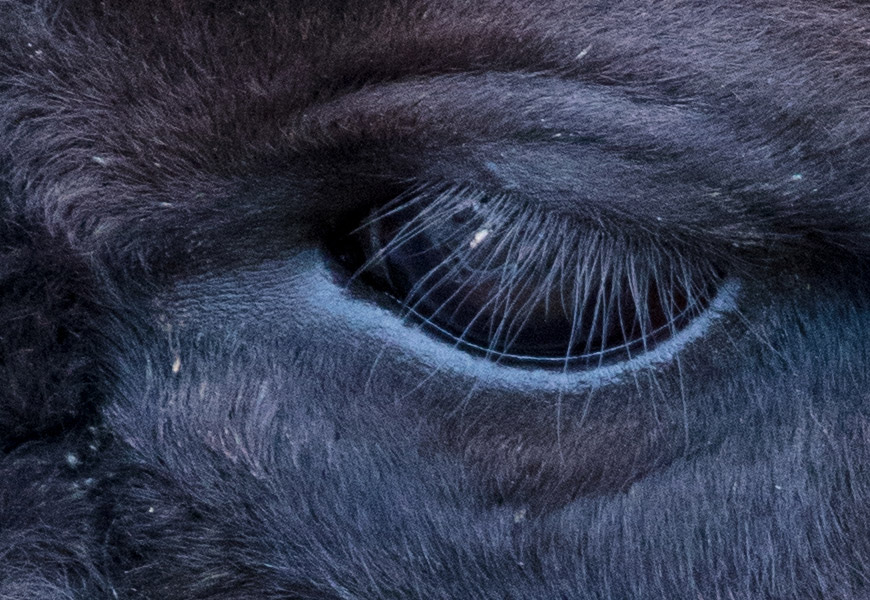
100% crop, even at high ISO1600, during the day there’s no loss in details.

100% crop, perfect tone gradients even on noise prone areas.
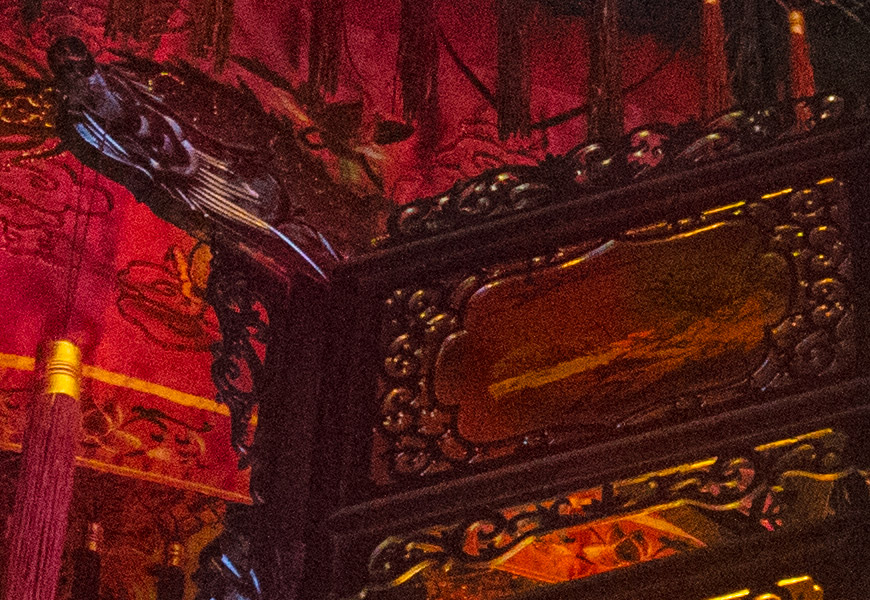
100% crop, in spite of the noise, there’s no magenta cast on higher ISOs, except for those already on the scene.

100% crop, ISO1600 during the day, free of noise and with plenty of resolution.
The in-camera JPEG processing also got Canon’s attention on the 5DS, to use the extra resolution even by those unable to apply raw to their workflows. A new “Fine Detail” Picture Style profile enhances photo sharpness, with new strength, fineness and threshold adjustments. The strength can be programmed from 0 to 7, focusing on the subjects edges, with darker of lighter lines. Fineness deals with the width of such lines, thicker at +5 or finer at 1. And the threshold dictates the contrast limit where the algorithm should (or should not) look to enhance details. At 1, only low contrast lines get sharpened, like cement lines. And on +5, only high contrast lines get treated, like window edges. It’s also useful for portraiture work, as the human skin, lacking high contrast lines, don’t get an artificial look. It all happens at 8688×5792 pixels, up to 5fps!
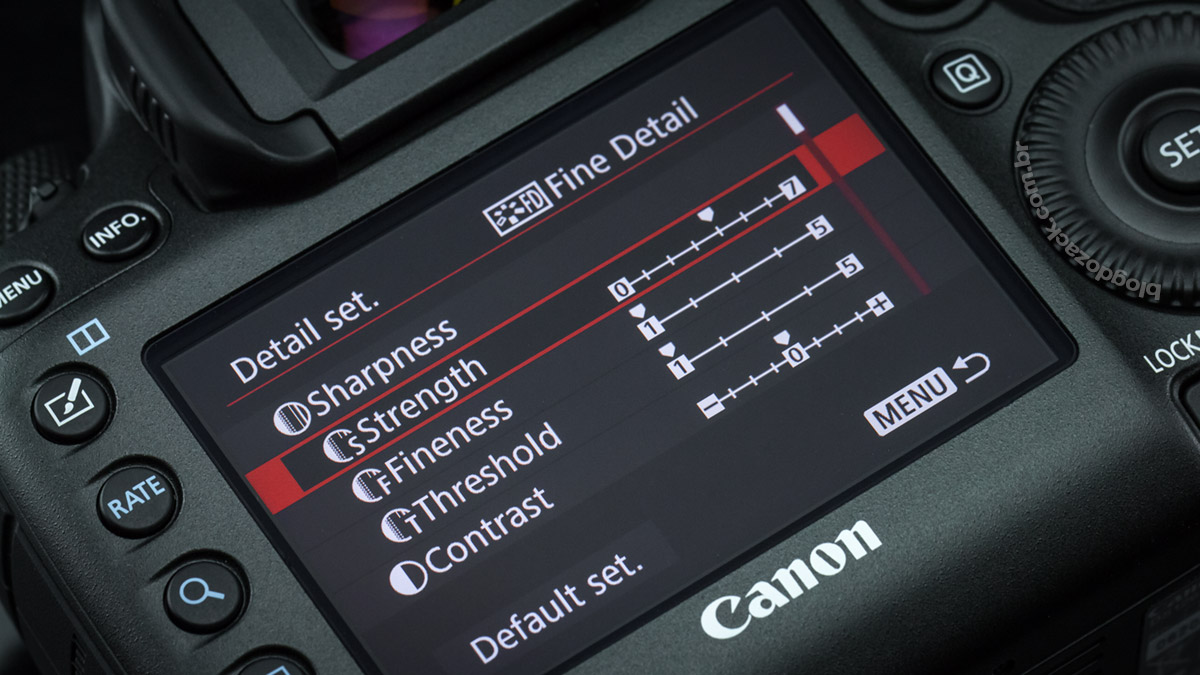
Finally Canon’s famous colors couldn’t be absent from the 5DS files, always a showcase unmatched by other brands. Coming from the Sony’s A6300, Fuji’s X-Pro 2 and X-T2, and Nikon’s D500 reviews, it’s always a pleasure to come back to Canon’s perfect colors, especially on full frame cameras. Photos have a warm felling, noticeable on outdoors or indoors shots. On a Manhattan evening, it’s interesting to see how the 5DS captures orange-pink tones on cement walls, while Sony captures it gray-blue. On colder environments, like Montana’s Glacier National Park, the 5DS sees a much warmer purple dusk, while Fuji’s X-T2 sees a indigo blue landscape. During sunset, it’s obvious Canon’s tendency to prioritize reds and yellows, noticed on autumn leafs. But it was really on Hong Kong’s temples, buddhists or taoists, the 5DS revealed it’s asian soul: red, green and blue tones are pure on the computer screen (R:100, G:100, B:100), especially matched to Canon’s L series.

“Forest II” with the Sigma 150-600mm f/5-6.3 DG OS HSM Contemporary at f/7.1 1/200 ISO200 @ 180mm; faithful natural tones under the sunlight.

100% crop, colors under every pixel, always filled with details.

“Leafs” with the Sigma 150-600mm f/5-6.3 DG OS HSM Contemporary at f/6.3 1/250 ISO100 @ 600mm; warm tones during the sunset.
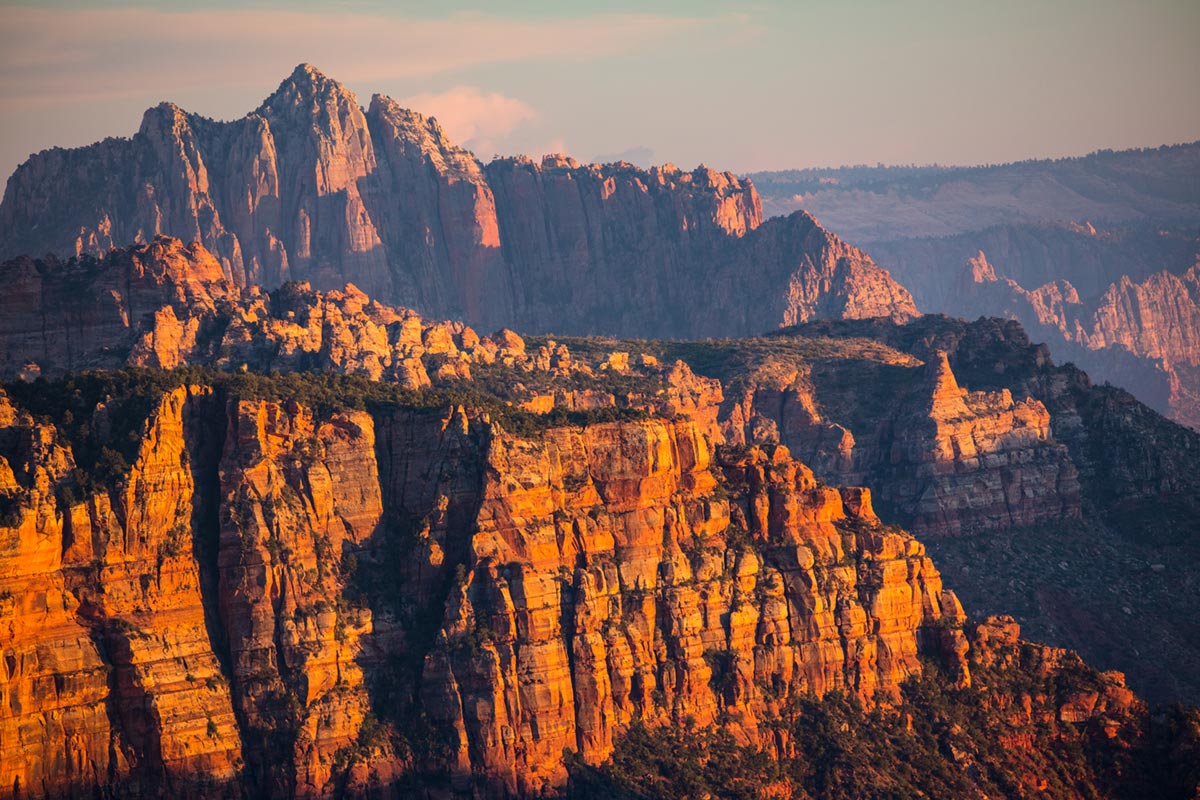
“Sunset” with the Sigma 150-600mm f/5-6.3 DG OS HSM Contemporary at f/7.1 1/200 ISO320 @ 421mm; perfect gradients and saturation.

“Dusk” with the Sigma 150-600mm f/5-6.3 DG OS HSM Contemporary at f/7.1 1/80 ISO320 @ 150mm; warm and cold on a single capture.
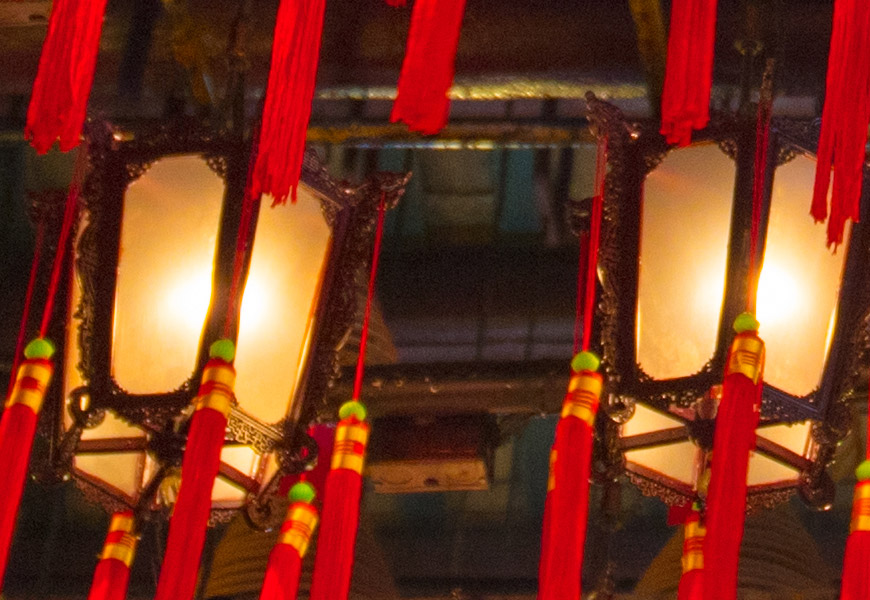
100% crop, Canon’s 100% reds, with perfect edge details.
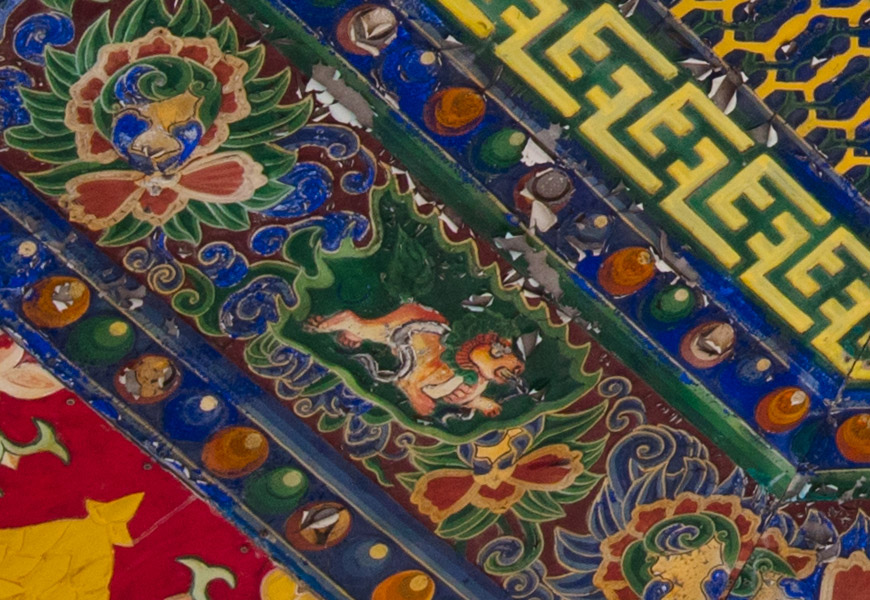
100% crop, to every pixel its color, a perfect Bayer rendering.
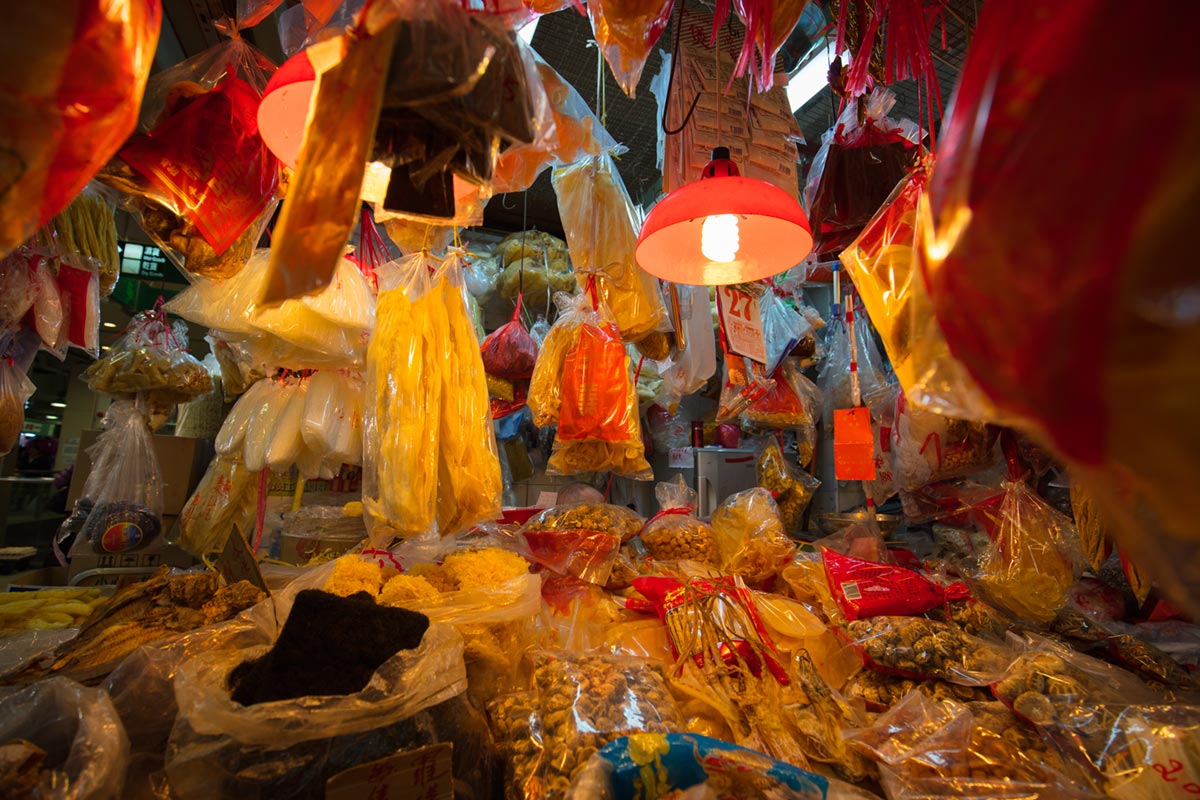
“Light” with the EF 16-35mm f/4L IS USM at f/4 1/20 ISO125 @ 19mm; a fairly complicated exposure with a fluorescent lamp + red difuser.

100% crop, the details from a 50.6MP file.
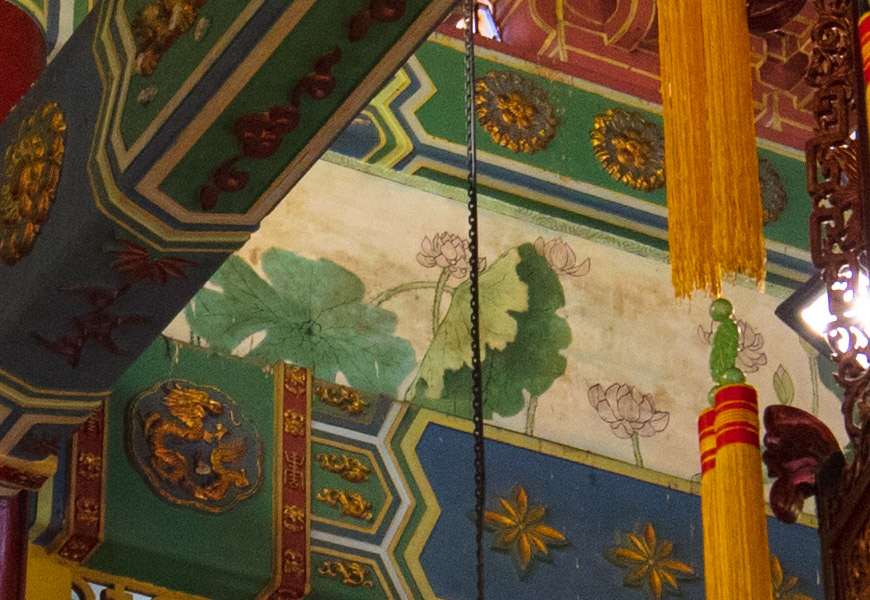
100% crop, the details other cameras can’t see, like the chain at the rear.
The Canon EOS 5DS is the ultimate camera for those making large prints. Keeping the ergonomics of one of the most popular cameras in history, the EOS 5D Mark III, Canon made everything better to suit the new 50.6MP imager that, even two years after its launch, it’s unmatched for the format. While it’s not alone on the market, the 5DS is the only camera that offers a complete package on a complete system, for a relatively low price. It follows the revolutionary steps of the classic 5D, that gave a full frame sensor to the hands of enthusiast photographers. The steps of the 5D Mark II, with 21MP and full frame Full HD video, launching a new hybrid-DSLR market. The way of the 5D Mark III and is reticular 61-points AF, borrowed from the 1D-X. And now opens new paths for large prints, reserved to expensive medium formats. It’s revolutionary as every 5D. Nice shooting!